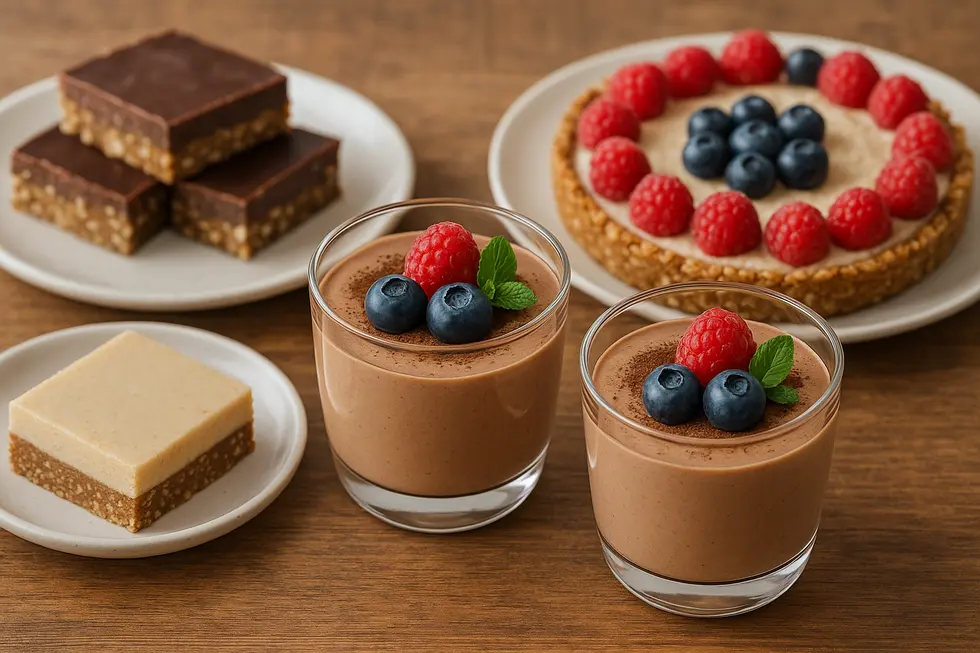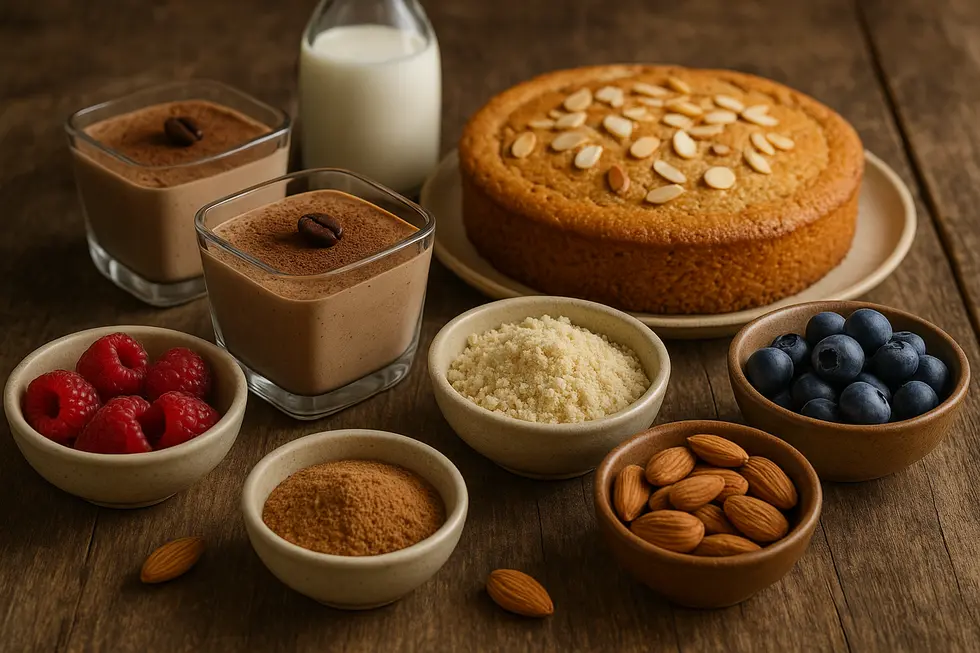For those managing diabetes or aiming for healthier eating habits, traditional desserts can pose a significant challenge due to their high sugar content and potential impact on blood glucose levels. However, low glycemic index (GI) desserts offer a delightful solution by incorporating ingredients that minimize blood sugar spikes. This article delves into the world of low GI desserts, focusing on innovative no-bake options as well as baked delicacies. Discover how these desserts can satisfy your sweet tooth while aligning with health-conscious dietary choices.
Crafting Delicious Low Glycemic No-Bake Desserts: A Guide to Healthy Sweet Indulgences

Exploring the world of low glycemic index (GI) no-bake desserts can be a delightful journey into healthier eating without sacrificing the joy of indulgence. In a realm where controlling sugar intake is paramount, these no-bake wonders offer a haven for those looking to enjoy sweets without the ensuing spike in blood glucose levels. This chapter delves into the heart of crafting these culinary delights, emphasizing the selection of ingredients and methods that make no-bake desserts both delectable and suitable for a low GI diet.
The allure of no-bake desserts lies in their simplicity and the sheer ease of preparation. They embody a philosophy that favors minimal cooking time and the fresh, vibrant flavors of raw ingredients. Start with a base like rolled oats, a low-GI darling, known for its ability to release glucose at a slow, steady pace. Unlike quick-cooking oats, rolled oats maintain their integrity, providing a hearty texture and a cereal-like sweetness that pairs beautifully with various flavors. Explore benefits of low-GI oatmeal.
Natural sweeteners are pivotal in redefining the sweetness of no-bake desserts. Erythritol, stevia, and monk fruit are among the top choices due to their negligible impact on blood sugar levels. When concocting no-bake masterpieces like sugar-free cheesecakes or caramel cookie dough bars, these sweeteners ensure that sweetness is delivered without the dreaded sugar rush. Such desserts are not only glucose-friendly but often gluten-free, providing a tempting selection for diverse dietary needs.
Fruits play an enchanting role in this sweet symphony. With fresh fruits as the focal point, no-bake desserts take on a gustatory brilliance both refreshing and naturally sweet. Consider the tangy zest of a lemon curd dessert, where almond flour crusts mimic traditional pastry textures, or the simplicity of a banana mug cake, naturally sweet and microwave-ready in minutes. These creations embrace fruits as natural sugar substitutes, presenting endless possibilities for nutritionally balanced indulgences.
To create your own no-bake desserts, start by choosing ingredients that naturally support a low glycemic lifestyle. Almond flour and coconut flour provide nutty flavors and adaptable textures for crusts and bases. Their low GI profiles make them ideal choices for those aiming to maintain stable blood sugar levels. Meanwhile, full-fat coconut milk can transform desserts into creamy, dreamy treats, lending richness and depth without reliance on high sugar content.
Experimentation is key. Taste and texture vary with each sweetener and base, and discovering the perfect combination often requires a bit of trial and error. Stevia and monk fruit sweeteners lend themselves well to this experimentation, as they provide sweetness without adding calories or raising blood sugar levels. Alongside these, ingredients like nuts and seeds not only contribute to the nutritional value but also enhance the textural complexity of your creations.
When equipped with the right ingredients and a dash of creativity, the realm of low glycemic no-bake desserts becomes an expansive canvas. Whether you’re a seasoned baker or a culinary novice, these recipes offer the delightful promise of sweet treats that joyfully align with a healthier lifestyle. With an abundance of alternatives to traditional sugar and flour, the satisfaction of enjoying desserts free from the consequences of a sugar spike is, quite literally, just a mix and chill away.
For those seeking further inspiration and creative recipes, explore an extensive selection of sugar-free desserts, demonstrating how low-glycemic sweets can be integrated into daily nutrition without compromising flavor. Find recipes for sugar-free treats.
A Sweet Balance: Baked Delights with Low Glycemic Impact

Low glycemic index desserts provide an innovative way to indulge your sweet tooth without compromising your health. Among the most popular and versatile options in this category are baked desserts, which harness alternative ingredients to minimize sugar spikes. These desserts cater to those looking to manage their sugar intake or maintain a balanced diet. From rich, velvety cakes to comforting fruit bakes, the realm of low glycemic baked desserts offers an array of choices that satisfy cravings while supporting health.
At the heart of these desserts is the use of almond flour and coconut flour. Both are lower in carbohydrates and have a smaller effect on blood sugar levels compared to traditional wheat flour. Almond flour, derived from finely ground almonds, is not only gluten-free but also rich in protein, healthy fats, and vitamin E, making it a nutritious substitute. Coconut flour, on the other hand, is high in fiber and gives baked goods a subtle, sweet flavor. Together, these flours create a base for desserts that are both satisfying and better for blood glucose management.
Sweeteners play a crucial role in crafting low glycemic desserts. Natural sweeteners like monk fruit and stevia are often preferred due to their zero-calorie content and zero impact on blood sugar levels. These sweeteners provide the necessary sweetness without the unwanted surge in glucose, making them a staple in low GI baking. When paired with ingredients such as ricotta cheese or Greek yogurt, which add moisture and protein, these sweeteners ensure the final product is indulgent yet balanced.
A standout example of a well-crafted baked low GI dessert is a keto chocolate ricotta cake. This cake combines almond flour with creamy ricotta, using monk fruit to sweeten the mixture. The result is a rich, dense cake with a moist crumb, offering a satisfying chocolate hit without the sugar load. This dessert illustrates how a thoughtful selection of ingredients can yield a product that is both enjoyable and health-conscious.
In addition to cakes, baked fruit desserts like apple crisps or berry cobblers can be transformed into low glycemic options. By using a topping made from a mix of almond or coconut flour, nuts, and oats blended with a low GI sweetener, these warm, comforting desserts provide a satisfying finish to any meal. The natural sweetness of baked fruits, combined with the crunch of nuts and the tenderness of oats, creates an experience that marries wholesome ingredients with delectable flavors.
The health benefits of consuming low glycemic baked goods extend beyond blood sugar management. The presence of natural fats, proteins, and fiber in these desserts contributes to prolonged satiety, reducing the temptation to overeat. Furthermore, these ingredients often come packed with antioxidants, supporting overall cellular health and bolstering the immune system. It’s this nutritious composition that sets low GI baked desserts apart from their traditional counterparts, which often rely on refined sugars and flour.
While these desserts provide a nourishing option for many, it’s vital to approach them with awareness. Some individuals may experience digestive sensitivity to certain sugar alternatives or high fiber content, which underscores the importance of individual dietary consideration. As always, maintaining open communication with healthcare professionals can help tailor one’s dietary choices to suit personal health needs.
For those eager to explore this world further and delve into the variety of low GI desserts available, online resources offer extensive guidance and inspiration. Websites like Ruled.me Keto Dessert Recipes serve as a treasure trove of ideas, sharing recipes that are low in carbs and sugar yet rich in flavor and satisfaction. Additionally, educational platforms such as the Glycemic Index Guide provide invaluable insights into incorporating low GI foods into one’s diet, enhancing understanding and practice.
Ultimately, embracing baked low glycemic index desserts offers more than just a way to enjoy sweets guilt-free. It signifies a shift towards mindful eating, empowering individuals to make choices that align with both their taste preferences and health aspirations. As the movement grows, it continues to redefine traditional notions of dessert, welcoming creativity and health into the dessert landscape.
Final thoughts
Navigating the world of desserts doesn’t have to mean compromising on health, especially for those managing blood sugar levels. Low glycemic index desserts offer a balanced approach, providing the sweetness you crave while safeguarding against drastic glucose spikes. By exploring both no-bake and baked options, individuals can enjoy a variety of delicious treats that cater to their dietary needs. Whether it’s the convenience of no-bake creations or the homely charm of baked goods, these dessert alternatives ensure a guilt-free indulgence.
Don’t just read about better health—live it. Download the Glycemic Index Guide Tracker today to start making smarter food choices, track your glucose, and stay on top of your nutrition—all in one app.
About us
Glycemic Index Guide Tracker is a powerful yet easy-to-use mobile app designed to help you make informed dietary choices by tracking the glycemic index (GI) and glycemic load (GL) of the foods you eat. Whether you’re managing diabetes, following a low-carb or keto diet, or simply aiming to maintain steady energy and better health, the app offers a comprehensive food database, nutrition and glucose tracking tools, weight monitoring, and curated low-GI recipes—all in one intuitive interface. It’s your go-to companion for understanding how different foods affect your blood sugar and for building smarter eating habits.


Leave a Reply